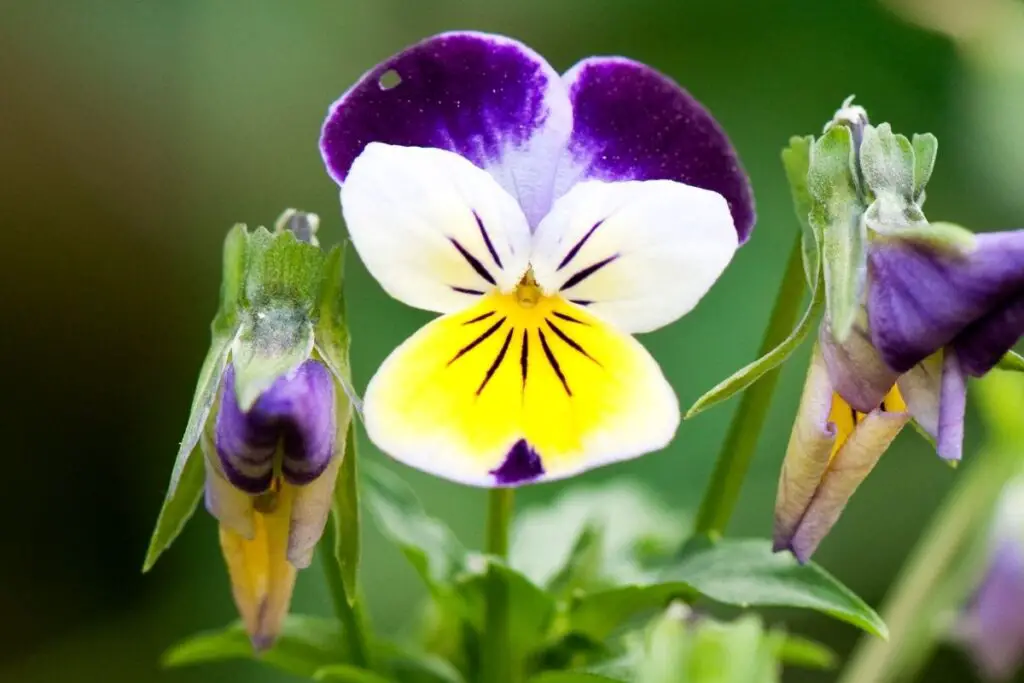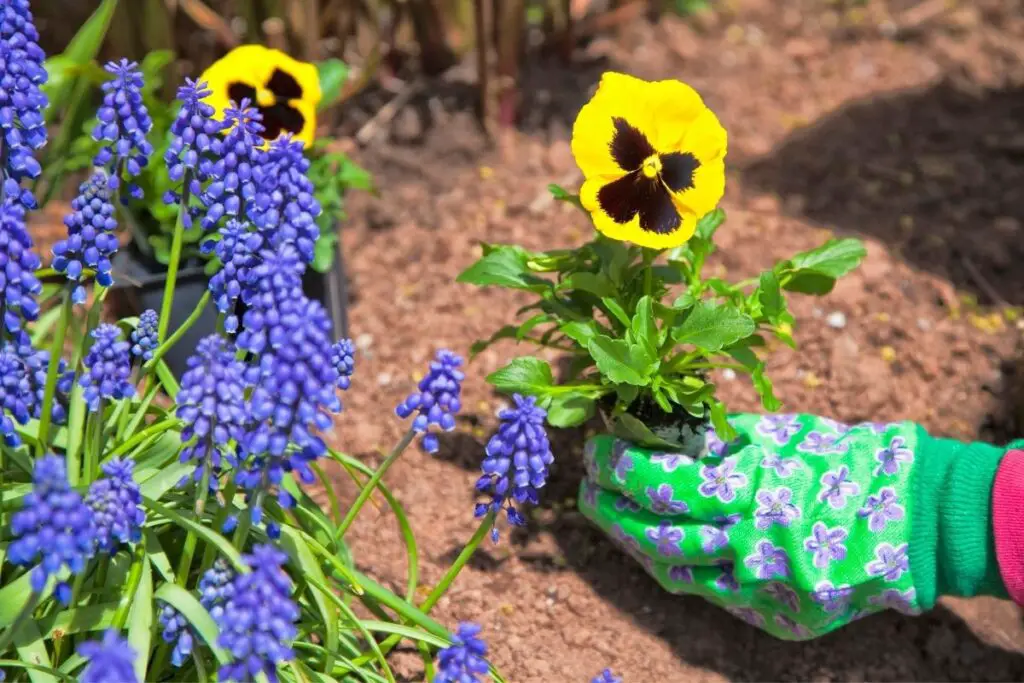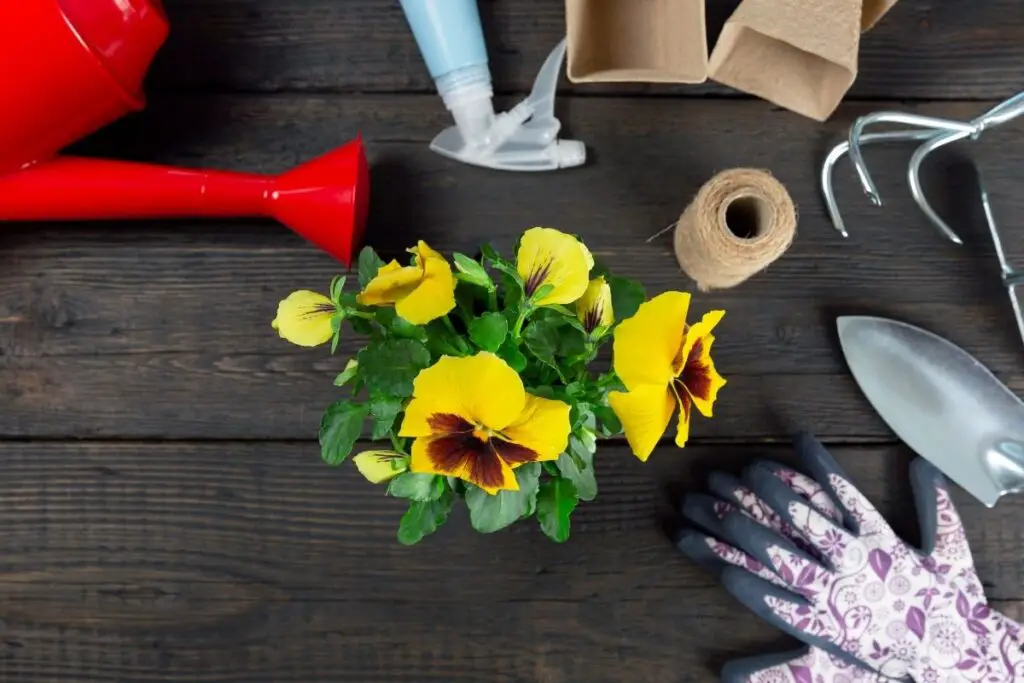Pansy is a large-flowering hybrid plant cultivated as a garden flower. Whether the pansies will live long or not is a question that crosses the mind of every gardener if they plan to grow them.
So, in this article, we shall learn how long do pansy live?
The pansies are annual or short-lived perennials, depending on the climate they are growing in. The average lifespan of the pansy is 2 years if you grow them in an appropriate environment. In most places, pansies are potted during the fall, and they start blooming by early spring.
This article will discuss how long pansies can survive in different seasons and the seasonal care for pansies.

Are my pansies annual or perennial?
Pansies are mostly short-lived perennials. But they can be treated as either an annual or a perennial, depending on your climate.
Most gardeners treat pansies as annual or biennial plants because it prefers cool weather and gets leggy in the summer heat.
Pansies don’t tolerate heat very well, which means they cannot survive well during hot weather, and hot temperatures can reduce the flowering.
Pansies are the opposite when it comes to cold. They can survive easily in cold weather. If the blooms wither or wilt in the cold, the pansies do not die. They will stay alive to bloom again, making them a great flowering plant for fall and early winter.
They are called biennial as they can survive only for two years. Once the two-year growing cycle of pansies is complete, they die completely.
The survival of the pansies depends on the climate of a place.
Will my pansies come back year after year?
It depends on the temperature whether pansies can come back or not.
There are no true perennial pansies that return every year.
The pansies can come again in spring in average temperatures, especially if you had mulched the soil. Pansies will act as perennials if they are exposed to average temperatures, mild summers, and freeze that last for a small period.
Like in the Pacific Northwest, pansies will often come back the following year and provide seedlings year after year because they have cool temperatures in such areas.
But gardeners in the Midwest and south assume their plants as annuals because such areas have hot weather conditions.
Pansies should be treated as short-lived annuals in most regions as they hardly come back year after year.
What is the duration of pansies?
Biennial pansies can survive for two years. Once the two-year growing period is over, pansies die back completely. Pansies are cool-weather biennials, and they can survive freezing temperatures when they are dormant.
Some pansies are annual and can last up to eight months or one year if planted in the autumn, from August to April or May. The survival of the pansies is dependent on the climate.
After one year, when the extreme heat arrives, pansies begin to die.
Looking for gardening supplies? We have tested 100's of products before recommending them to you guys. Check out our best pick below:
| Image | Gardening Supplies | Best Price? |
|---|---|---|
 Top
Top Top
Top | Raised Garden Bed Kit | Check On Amazon |
 | XLUX Soil Moisture Meter, Plant Water Monitor, Soil Hygrometer Sensor for Gardening, Farming, Indoor and Outdoor Plants, No Batteries Required | No Results |
 Top
Top Top
Top | 82 Pcs Garden Tools Set and Extra Succulent Tools Set | Check On Amazon |
 | Joeys Garden Expandable Garden Hose with 8 Function Hose Nozzle, Lightweight Anti-Kink Flexible Garden Hoses, Extra Strength Fabric with Double Latex Core, (50 FT, Black) | No Results |
 Top
Top Top
Top | Dual Chamber Compost Tumbler | Check On Amazon |
 Top
Top Top
Top | Sunnyglade Plant Stakes | Check On Amazon |
 Top
Top Top
Top | Organic Cold Pressed Neem Seed Oil | Check On Amazon |
 Top
Top Top
Top | Mighty Mint Gallon :-Insect and Pest Control Peppermint Oil | Check On Amazon |
 Top
Top Top
Top | Scotts DiseaseEx Lawn Fungicide | Check On Amazon |
 Top
Top Top
Top | Jacks Classic 20-20-20 All Purpose Fertilizer | Check On Amazon |
 Top
Top Top
Top | 30,000 Seeds Pollinator Attracting Wildflower Mixture | Check On Amazon |
 Top
Top Top
Top | Survival Vegetable Seeds Garden Kit-Over 16,000 Seeds | Check On Amazon |
Climate requirements for pansies

In warm climates, pansies are grown as annuals during the cool season.
Pansies grow and bloom during the cool fall, winter, and spring months when temperatures remain above freezing.
During summer, when the temperature rises, the heat-sensitive pansies become dry, and they die.
In a warm climate, you should plant your pansy seedlings in the fall. And in colder areas, you should plant the pansies during the early spring.
Pansies bloom the best when night temperatures are around 40-60°F during the day.
Plant your pansy seedlings when the soil temperatures are between 45 and 65°F to get the best results.
What temperatures can kill pansies?
Pansies can die back from temperatures that are either too cold or too hot.
In winter
Pansies tend to tolerate low temperatures, thriving in cool weather (40 to 60°F).
But they can survive cold temperatures only for a specific limit. They can survive temperatures down to the single digits, but when the air temperatures drop below 25°F, pansy leaves will wilt, turning into a grey-green color.
It becomes difficult for pansies to survive in such cold weather.
If the ground freezes during extreme winter climate, the plant’s roots will not be able to absorb water and nutrients, which will make them dehydrated, and then the plant will die.
In summer
Pansies cannot tolerate excessive heat and humidity. Heat causes pansies to become leggy and stop blooming.
Pansies experience heat stress when the temperature goes above 90°Ft.
Excess heat hampers pansies’ growth and causes too much moisture loss from the plant foliage, which turns the leaves brown.
They need special attention in such dry conditions.
Do pansies last all summer long?
Pansies are classic cool-weather flowers. Summers are not the best time to expect blooms out of your pansies.
You can plant pansies as annuals but you will not see flowers when the summer heat starts approaching. Pansies will have blooms till that time.
During summer, you won’t find any blooms on your pansies. But after the heat decreases, the pansies will start blooming again.
Pansies just need special attention and care to survive.
How to keep pansies alive in summer?
- Try to move your pansies to the shaded areas or cover your pansies to protect them from sunburn.
- You should have a proper watering schedule to maintain the growth of your plants.
- Fertilize your pansies in hot temperatures to encourage strong growth in pansies.
- Prune the pansies at regular intervals to keep them healthy.
- Mulch the soil surface to keep them moisturized.
Can pansies survive in extreme cold?
Pansies can survive frost only up to a specific limit. When the temperatures fall below 10° for several hours, this is an extreme cold situation for pansies.
In such an extreme climate, roots will not absorb water from the frozen soil, and it will kill the plant completely.
Frozen soil and dry wind can kill the pansies, even if the plants are healthy. The plants will be able to survive icy conditions if pansies are taken care of properly.
As long as you provide your pansies with good winter care, they can successfully survive throughout the winter.
How to keep pansies alive in winter?
- Try to provide a minimum of four hours of direct sunlight to your pansies.
- Provide them a water-soluble, liquid fertilizer every two to three weeks.
- Prune off all the old flowers and dead foliage to keep them healthy.
- Cover your pansies to reduce damage during a hard freeze.
Seasonal care of pansies

Light: Pansies do well with about six hours of sun every day. In warm regions, protect plants from full sun. Too much heat can slow flower formation.
During winter, try to provide a minimum of 4 hours of sunlight to the soil to prevent pansies from freezing.
Watering: Pansies need a good moisture level in the soil to grow well, but the soil should not be soggy.
Pansies should be watered frequently but make sure you don’t overwater them. You should provide pansies with 1 inch of water when they are actively growing.
Improper watering can lead to the death of pansies.
Soil: Pansies thrive in soil containing organic matter. The potting soil should be a mix of finished compost, bark fines, or other locally available organic matter into planting beds.
For potted pansies, choose a bagged commercial planting mix. Check the instructions before adding them to the pot.
Fertilizer: Avoid giving pansies high-nitrogen fertilizers during September to keep them from becoming leggy.
During winter, pansies will need extra fertilizer as it is the growing season. Absorbing granular fertilizers might be challenging for the pansies, especially during the winter months so it is best to go for liquid fertilizers.
Make sure you provide sufficient fertilizer to these plants during the winter.
Pests: Pansies are mostly pest-free plants. But sometimes, aphids may attack in early spring. An insecticidal soap spray removes these pests quickly.
Slugs are another biggest potential threat to pansies, especially in the early and late growing season. Use slug bait or traps to deal with slugs or snails.
Mulching: Mulching is important for pansies, whether the climate is cool or hot. It acts as a protector of the roots of the plant by helping the soil to retain moisture.
Mulch your pansies with 2 inches of organic material such as pine straw or pine bark to help conserve moisture.
Pruning: Remove the old flowers and dry foliage from pansies to encourage them to bloom more.
Pruning the pansies helps to control the size and shape by removing the dead and diseased portions.
Final words
- Pansies can be both perennials and annuals, lasting up to 1 or 2 years, depending on the climate.
- Pansies bloom the best when night temperatures are around 40°F, and in the day, it is 60°F.
- Pansies die when the air temperature is below 25°F (-4°C) in winter.
- During summer, pansies experience heat stress when the temperature goes above 90°F.
- Pansies can survive extreme heat and cold only when they are taken care of properly.
- Proper seasonal care of pansies is essential for their growth and survival.
Ref: The University of Arkansas, Britannica, Utah State University, Wikipedia, The University of Georgia, The Pennsylvania State University, The Royal Horticultural Society.
